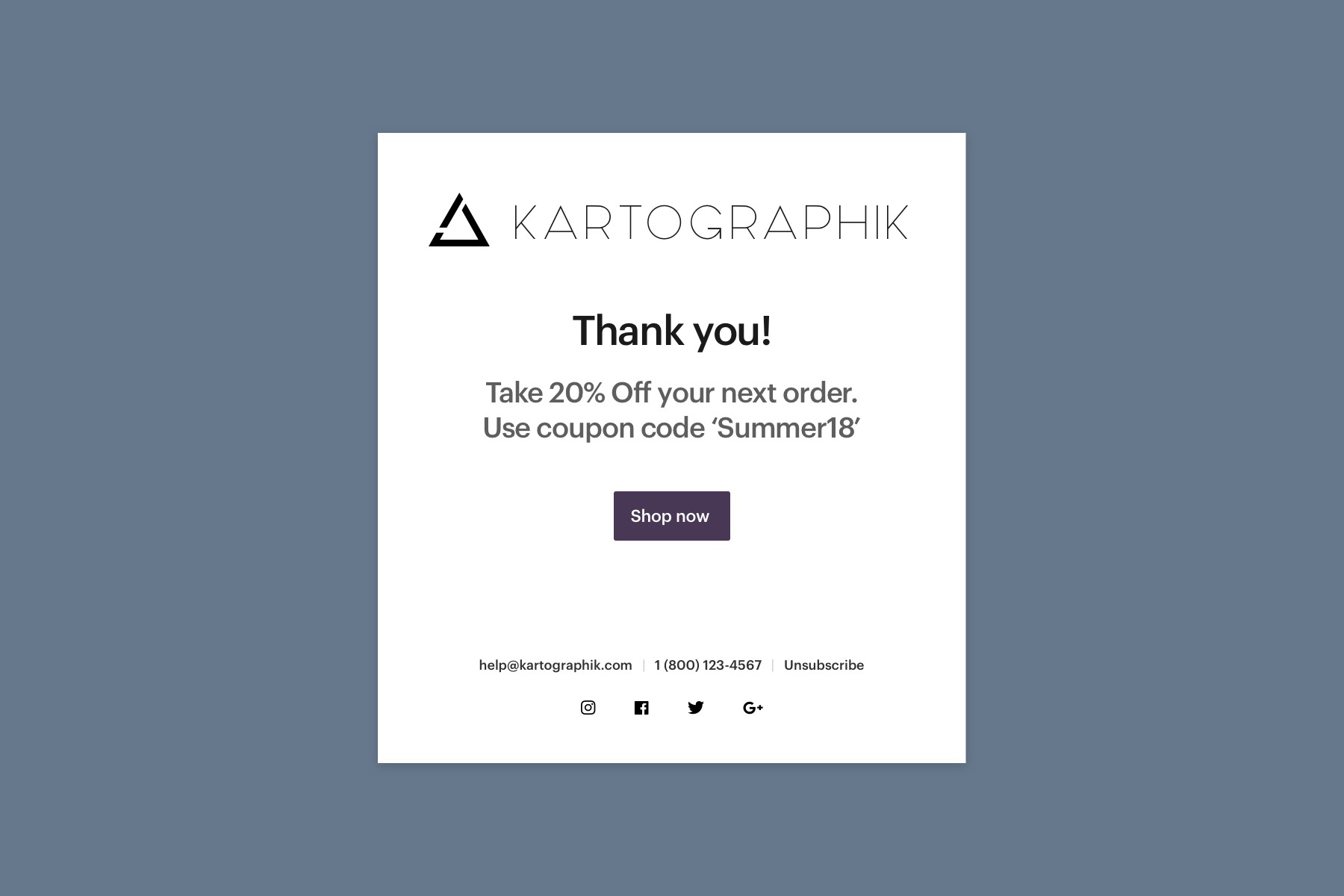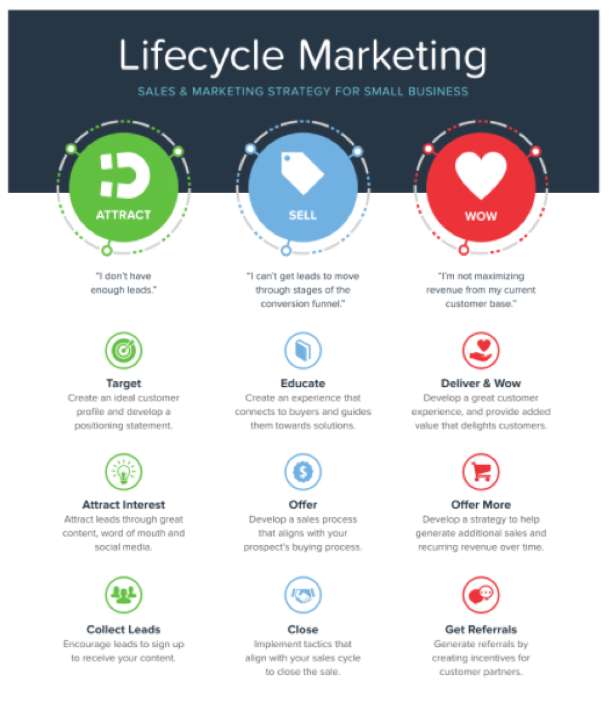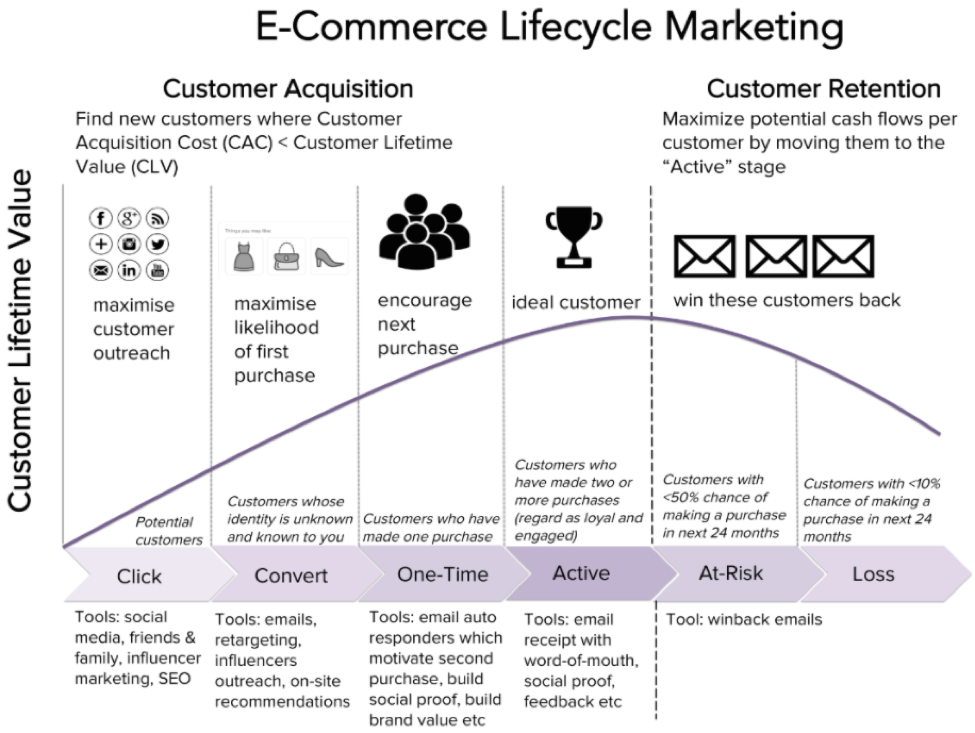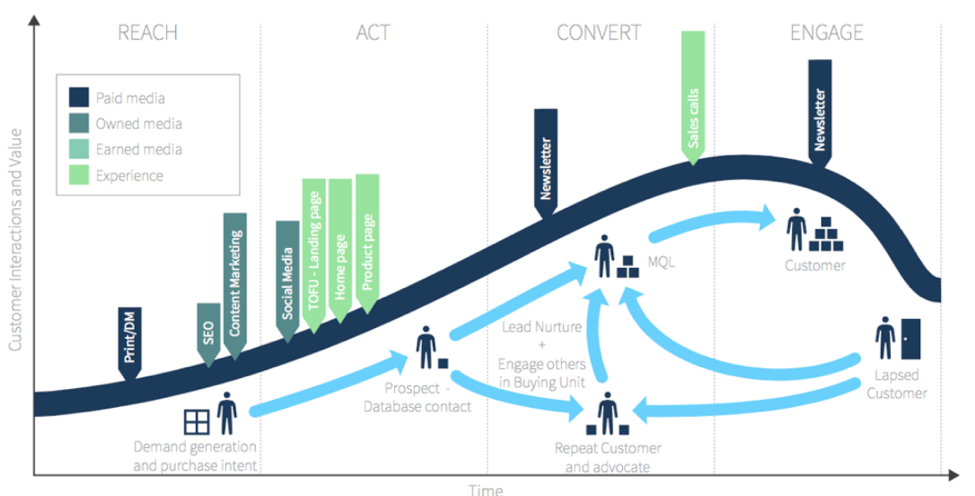Chapter 8
Increasing Loyalty and Retention with Email Marketing

You’ve heard it time and time again. It’s cheaper to get current customers to make a repeat purchase than it is to find new customers. Customer acquisition creates a foundation of customers while your retention strategy is how you maximize revenue for each one. Specifically, customer retention describes how businesses drive repeat purchases from existing customers.
But, how much time and resources should you devote to each? The answer in short is that it depends on your store. Whether you should focus more on acquisition or retention is heavily influenced by where your store is in its lifecycle. A store that started yesterday is vastly different than one that’s been up and running for many years so you should tailor your marketing strategy based on its stage.
Take a look at the Digital Marketing funnel stages below to help you determine the type of marketing you should focus on:
1. Early Stage: When you’ve just started your store there is only one thing you should be focused on, and that is to get new customers. At this point your acquisition efforts should completely trump retention. Focus on strategies and tactics that will help you grow your customer base and getting customers in at the top of your sales funnel.
2. Early-Growth Phase: You now have customers and you are getting sporadic sales. At this stage you can begin to introduce retention elements to encourage each customer to buy more. It would be good to start with retention email campaigns that focus on encouraging a past customer to purchase from you again.
3. Growth Phase: Once your store catches on, it enters the growth phase. This is the point where you should begin to think about mixing in more retention with your acquisition efforts. You can look at starting a loyalty and/or a referral program as well as getting more serious with marketing automation.
4. Mature and Established: You are now an established ecommerce store. A common problem for retailers of this size is finding ways to continue to grow. Acquisition may be leading to a lot of one time purchases, but a retention strategy can get customers to buy more often which increases their lifetime value. At this stage, you should be serious and deliberate about your retention efforts.
5. Well-established: At this stage your store has made it past the initial gauntlet. You’ve achieved many early successes and you have a lot of processes and automations in place. Now is the time to focus heavily on retention.
E-commerce Lifecycle Marketing (Product Lifecycle vs. Marketing Strategies):



In addition to stage your store is in, the kinds of products you sell will also influence whether you focus on customer retention or new customer acquisition. A retailer selling high-end leather furniture is going to have different needs than a store selling tea and coffee. A store whose customers purchase high value items frequently will have the highest customer lifetime value (CLV). These are the types of stores that have the most to gain from a solid retention strategy.
Email Marketing Strategies for Loyalty and Retention
Emails give you the opportunity to build a relationship with your customers before and after their initial purchase.
Thank First Time Customers: A great way to get started is with follow-up emails. A week after a customer’s first purchase, send them an email that acknowledges and thanks them for buying. This type of acknowledgement helps customers feel good about their decision to buy from you, and makes your brand more approachable. You can do this by setting up a 'Thank First Time Customers' email automation in the Automations tab. You can make this initial email even more impactful by recommending products that complement their initial purchase. Finally, you can even start including customer reviews as well. These endorsements will increase both the value of each recommended product and the customer’s desire to buy.
New Product Announcements: After this initial follow-up has been sent, you should make sure to send personalized messages regularly. Send personalized emails that offer new products or sales every three or four weeks. Making additional product recommendations and sending invitations for upcoming sales and promotions for new products are great ways to keep the conversation going with first-time buyers.
Product Replenishment Reminders: If you have a product that is perishable, consumable, or otherwise needs to be refreshed over time, knowing your products’ lifespan and sending well-timed emails can be the perfect way to bring back dormant customers. This tactic can be particularly effective because ideally, you’ll be delivering the right message to the right person at the right time.
By knowing and keeping track of how frequently your customers need to replenish products, you can set up a series of automated emails to go out after three months, six months, and one year, and encourage repeat business.
Offer a discount to return: In general, be judicious about the amount of discounting you offer. If too frequently offered, customers will be conditioned to expect dropping prices, which ultimately results in a loss of revenue for your store. However, discounts sent to first time buyers to be used for their next purchase is a great way to get them to return to your store. For this reason, discounting can also be an effective way to bring back customers that haven’t purchased in a while.
You can motivate customers to purchase even more by giving 20%+ off. This won't be lost value because according to MarketWired, once a customer comes back for a second purchase they have a 54% chance of doing so again.